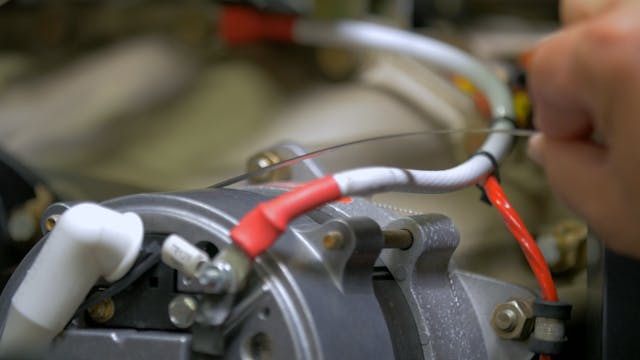Leading Tips for Effective Electrical System Troubleshooting
Repairing electrical systems calls for a methodical strategy, grounded in a thorough understanding of electrical concepts and security methods. By familiarizing oneself with circuit parts, utilizing crucial tools, and sticking to a structured evaluation technique, specialists can efficiently recognize and deal with concerns. The nuances of efficient fixing expand beyond simple technological knowledge; understanding exactly how to document searchings for and prioritize safety and security can dramatically influence outcomes. As we discover these vital components further, it ends up being clear that grasping this procedure is not simply useful but important for success in the field.
Understand the Fundamentals
Comprehending the fundamentals of electrical systems is vital for efficient troubleshooting, as a solid foundation allows specialists to identify and fix problems much more efficiently. A comprehensive grasp of electric concepts, such as voltage, existing, resistance, and power, is critical in recognizing the source of troubles. Voltage is the electric prospective difference that drives existing via a circuit, while resistance opposes the circulation of present, impacting the overall capability of the system.
Knowledge with circuit elements, including resistors, capacitors, diodes, and switches over, is also extremely important. Each element plays a distinctive function in circuit actions and can affect efficiency when malfunctioning. Additionally, comprehending collection and parallel circuit arrangements is important, as these setups influence the circulation of voltage and current within the system.
Service technicians have to be mindful of potential hazards, such as shock and short circuits, to execute risk-free troubleshooting methods. By understanding these fundamental principles, professionals boost their ability to conduct effective diagnostics and repairs, ultimately leading to improved performance and reliability of electric systems (electrical system troubleshooting).
Gather Necessary Tools
Efficient troubleshooting of electrical systems calls for the best set of devices to diagnose and resolve concerns precisely. Essential devices include a multimeter, which gauges voltage, present, and resistance, allowing for specific assessments of electrical elements.
Additionally, shielded hand tools such as screwdrivers, pliers, and cord strippers are crucial for securely manipulating electric links. It is also suggested to have a circuit tester available to validate the existence of voltage in electrical outlets and cables. For even more complex systems, a thermal imaging electronic camera can help identify overheating elements, showing potential failings.

Follow a Systematic Method
Having gathered the suitable tools, the next action in troubleshooting electrical systems is to follow a methodical method. A methodical technique guarantees that specialists can determine faults efficiently and accurately, minimizing downtime and preventing unnecessary repairs.
Begin by reviewing the system's schematic layouts and requirements. Recognizing the style and operational parameters will certainly give context for detecting problems. Next, isolate the trouble location by utilizing a procedure of removal. This includes checking each part methodically, beginning with the power source and functioning towards the load.
Utilize screening equipment, like this such as multimeters and oscilloscopes, to collect objective data concerning voltage, present, and resistance at different factors within the system. This empirical evidence will certainly direct your troubleshooting initiatives and assist to confirm or remove potential sources of failure.
In addition, think about environmental aspects that may affect the system's performance, such as temperature level fluctuations or wetness ingress. A detailed evaluation of circuitry, connections, and parts will make sure that all possibilities are represented.
Document Your Findings
Comprehensive paperwork is crucial in the troubleshooting process of electrical systems. This method not just help in recognizing the origin reason of the trouble but also serves as a recommendation for future fixing efforts.

In addition, keeping a log of components replaced or repairs performed is invaluable. This details sustains stock management and can aid examine the durability and reliability of details parts.
Eventually, the documentation procedure must be complete yet concise, making it possible for very easy retrieval and testimonial - electrical system troubleshooting. By focusing on comprehensive documents, professionals can produce a valuable data base that not only aids in present troubleshooting but likewise equips future upkeep efforts, thus boosting general system integrity

Prioritize Precaution
Acknowledging the inherent dangers related to electrical systems is critical for making sure safety and security during troubleshooting. Electric shock, burns, and equipment damage are simply a few of the potential dangers that specialists encounter. Focusing on precaution is not only a lawful commitment but additionally an ethical necessary that safeguards both the technician and the surrounding atmosphere.
Prior to commencing any type of troubleshooting job, specialists must wear suitable individual protective devices (PPE), consisting of insulated handwear covers, safety and security glasses, and flame-resistant clothes. Making sure that the workplace is completely dry and devoid of clutter can substantially reduce the risk of mishaps. In addition, it is important to de-energize circuits before starting any kind of job, confirming that they are not get redirected here live via making use of a multimeter or voltage tester.
Developing clear interaction protocols with employee is likewise vital; this makes sure that everyone recognizes prospective risks and the condition of the electric system being dealt with. Having an emergency situation action plan in place can prove important in the event of a case. By focusing on security measures, technicians can effectively minimize dangers and foster a safer office.
Final Thought
Effective electric system repairing relies on a detailed understanding visit this web-site of fundamental principles and a systematic strategy. Prioritizing security actions ensures the wellness of people involved and the stability of the electric system.